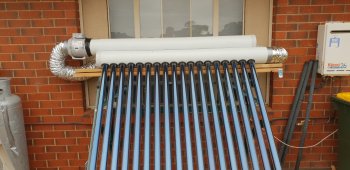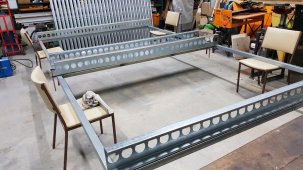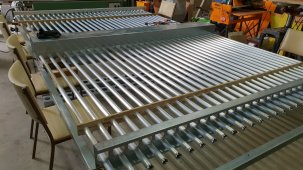I built a solar air heater several years ago and it is on its third winter now. It is basically 18 of the evacuated tubes normally used for heating water but without the copper collectors inside (didn't come with the batch of tubes I scored).
There's a thread over on thebackshed forum and there's a picture here ...
https://www.thebackshed.com/forum/ViewTopic.php?TID=13675&P=8#168642
Air is drawn out of the house into a manifold which feeds into the tubes ... and the warmed air in the tubes is forced into an outlet manifold and back into the house. Simple and crude.
The concept works well enough, though my example is not big enough for our open space home. On dark cloudy wintery days it is not really effective ... but on many days where it can be cold, windy and blustery but still with some sunshine ... we get quite decent results.
It probably works best leading into and out of winter where it adds enough warmth to allow us to reduce our wood consumption by about a third. There have been times when the inside temp has got up to 28 degrees C and we've had to turn it off ... but normally it operates completely autonomously with a differential controller making all the decisions.
There's a temp sensor inside the tubes and another in the house. I ended up setting it so that if the temp inside the tubes reached just 12 degrees above inside temp, the fan would come on and blow the warmer air into the house. When the temp (inside tubes) dropped down to just 5 degrees above inside temp, the fan would turn off.
I did start a large version to fit on the roof, but in my slackness and getting sidetracked, have not completed. The new one has 60 tubes and I am quite confident it will be worthwhile completing and installing. I'm looking forward to shifting the small one down to my workshop which I believe would be a perfect fit and keep it a lot more comfortable in winter.

I had to replace the thermistor inside the tubes after summer because the temp gets into the hundreds of degrees C and destoyed it ... and when I turned it on that day, the air blowing into the room was 113 degrees. Would burn ya face off. ? It took an hour or so to drop to 50* and sat on that for several hours.
Here's some pix of the new one ... It has a manifold down the centre and the concept is the same ... draw air in one end and out the other ... but the tubes are laying flat on the roof ... parallel to the gutter



 www.steffes.com
www.steffes.com

 www.steffes.com
www.steffes.com







